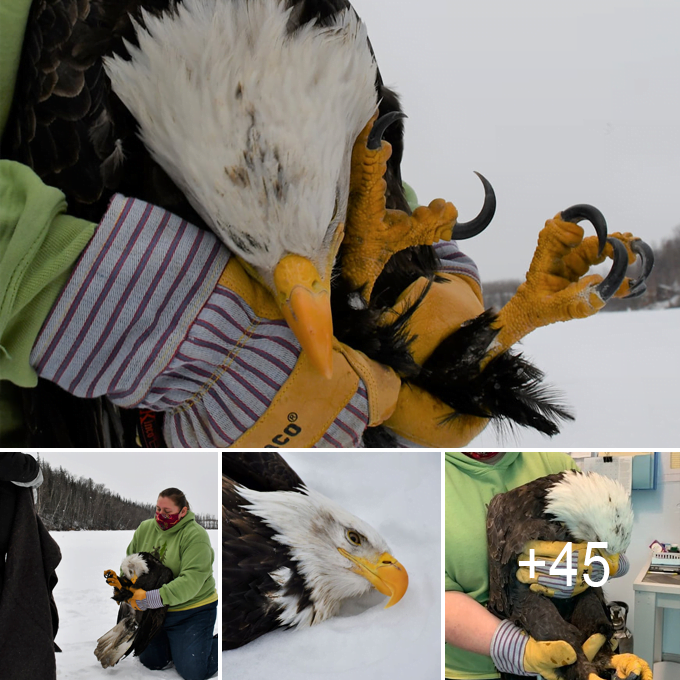Bald eagles are a common site in Alaska, and unfortunately, are often one of the species we are called to rescue. Rescuing a bald eagle is both exhilarating and sad as we often see these magnificent birds suffering seizures, incapable of flight or feeding, and they appear to be in pain.
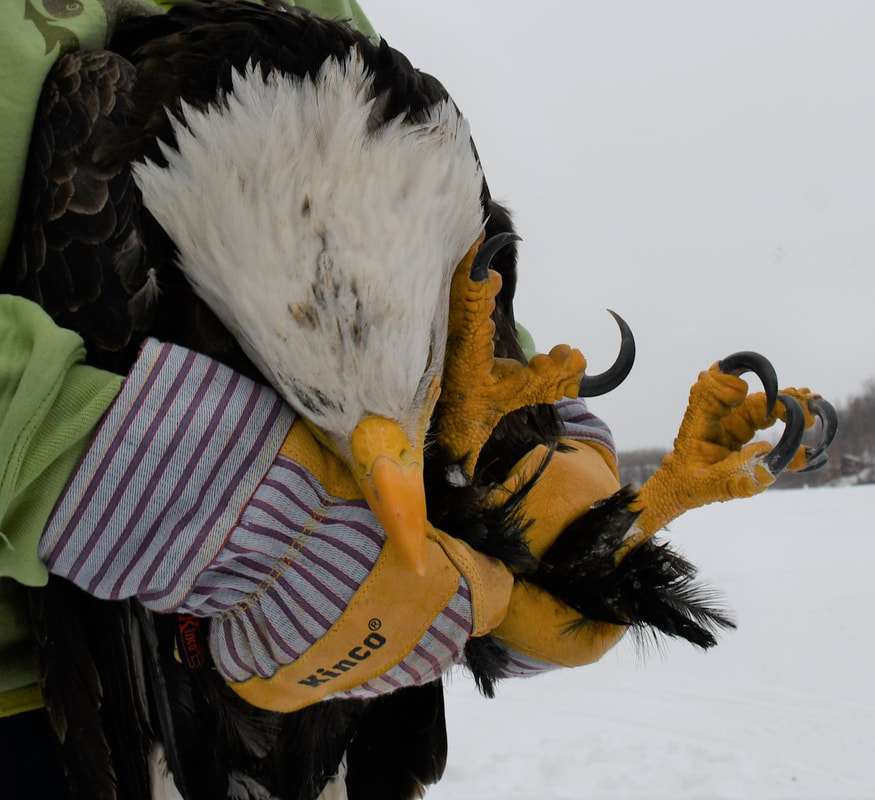
Bald eagles are ‘birds of prey’ which normally conjures images of successful hunters which use sharp talons and beaks to subdue prey. As hunters, bald eagles are fish specialists which can also capture small mammals and waterfowl. However, they are also efficient scavengers, taking on the ecological role of vultures that eat carrion, and it is this habit that often puts them in contact with poisons and toxins.
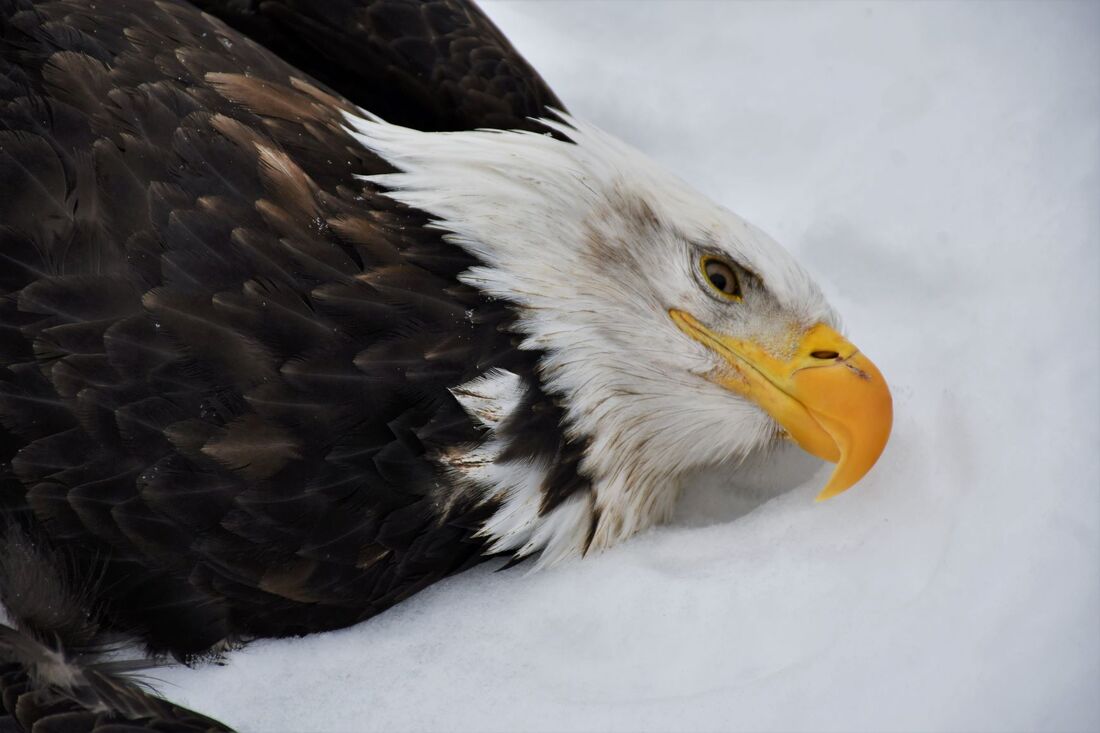
Lead poisoning from eating lead fragments in the remains from hunter killed animals has long been known to affect both bald eagles and golden eagles, leading to brain swelling (encephalitis). Encephalitis grounds these birds by decreasing coordination, flight, vision, and the ability to breathe. If they can be found in time, and before they injure themselves, they can recover with care.
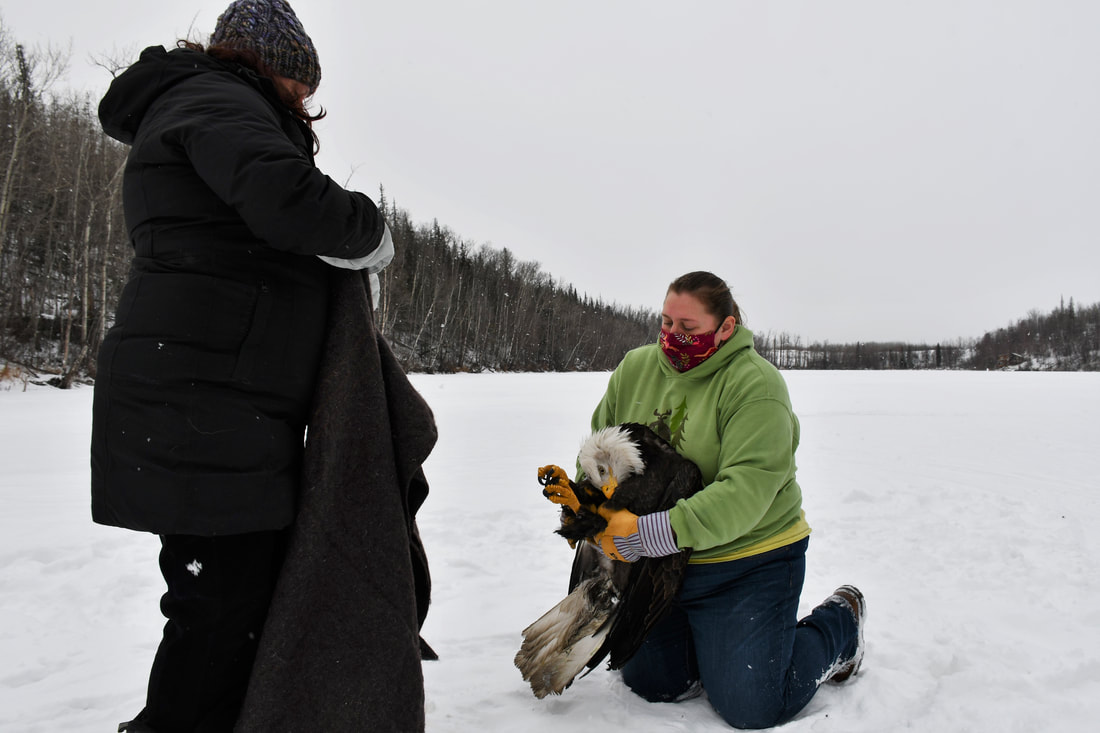
Recently, AWBRC was called to rescue a bald eagle found near a landfill. Landfills contain many toxins that can affect eagles, particularly immature eagles which use landfills more than older birds. For example, there have been documented cases of bald eagles poisoned by pentobarbital, a commonly used euthanizing agent, encountered by eagles feeding on euthanized cats and pigs that were improperly disposed of. With drugs like pentobarbital, the main cause of death is low body temperature and immobility caused by the drug. Rodenticides (poisons used to kill rodents) remain toxic and cause internal bleeding and death in eagles. Use of snap traps which kill pests without poisons can prevent this painful death. In some cases, large fines have been imposed on people who misuse rodenticides in ways that lead to eagle deaths, a reminder that bald eagles and other raptors are federally protected species.
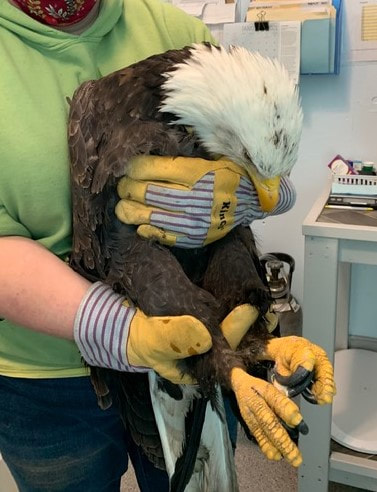
Insecticides, herbicides and fertilizers that come into contact with scavenged food at landfills can also poison eagles, and under some conditions, the use of these toxins on agricultural fields can lead to eagle poisoning when they eat prey that have ingested these substances. Again, death is rarely instantaneous, with affected birds suffering through lack of coordination and convulsions.
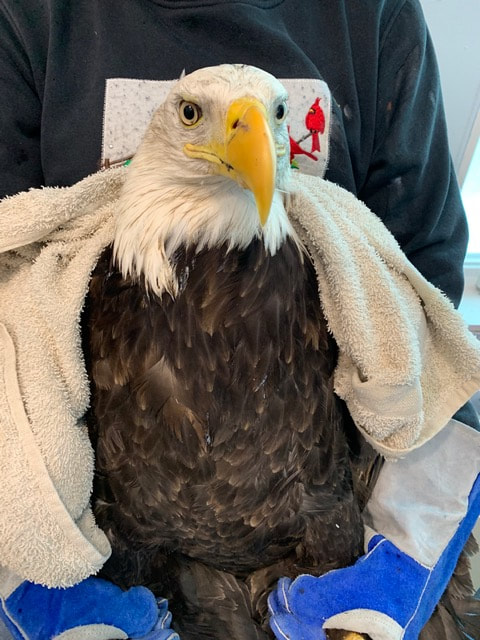
Toxins found in eagles can provide information that can directly affect human health. Samples from raptors have revealed environmental sources of organochlorines, PCBs (polychlorinated biphenyls), and mercury, leading to policy changes that reduce human exposure to these chemicals.
If you see an eagle that is trembling, twitching, behaving abnormally, or unable to fly, note the location and call a licensed rehabilitator or your local wildlife officials. There is a chance that if treatment can begin soon enough, the eagle can be saved.

